Renewable Energy and Energy Storage
Data is displayed for academic year: 2023./2024.
Lectures
Exercises
Laboratory exercises
Course Description
Solar radiation. Solar radiation measurement. Geometry of the earth and sun. Irradiation of horizontal and inclined surface. Calculation methods of terrestrial irradiance. Flat plate thermal collectors, convection and radiation losses. Selective surfaces. Efficiencies of solar collectors. Solar concentrators. Photovoltaic generation, solar cell, Solar radiation input and limits to cell efficiency. Examples of solar energy use for thermal and electric energy generation. Power from the wind, wind characteristics. Linear momentum theory, turbine types and efficiencies. Recent wind turbine use for electricity generation review. Introduction to geothermal energy. Biomass energy for thermal, biofuels, and electricity
Types of energy storage and its application in power and energy systems. Role of storage in distribution and transmission grids. Energy storage as a provider of ancillary services. Operation of energy storage depending on its ownership: private investor vs. system operator. Energy storage investments and regulation framework.
Study Programmes
University graduate
[FER3-EN] Electrical Power Engineering - profile
(2. semester)
Learning Outcomes
- Explain the basic differences and limitations of of treated source of energy in terms of density, predictability, variability and impacts on the environment and economy
- Generate credible assessments of the impact and the required capacity of renewable energy sources
- Argue the assessment of potentials and limitations of new sources of energy compared to conventional sources
- Identify the advantages and disadvantages of energy storage technologies in transmission networks
- Calculate the economics of investment in energy storage in power systems
Forms of Teaching
Lectures
Lectures will provide a theoretical background to the students.
ExercisesThese will be used to solve numerical examples to the students.
LaboratoryLaboratory exercises will serve to determine the renewable energy sources and battery storage characteristics.
Grading Method
| Continuous Assessment | Exam | |||||
|---|---|---|---|---|---|---|
| Type | Threshold | Percent of Grade | Threshold | Percent of Grade | ||
| Quizzes | 0 % | 10 % | 0 % | 10 % | ||
| Mid Term Exam: Written | 0 % | 40 % | 0 % | |||
| 2. Mid Term Exam: Written | 0 % | 40 % | 0 % | |||
| Final Exam: Oral | 10 % | |||||
| Exam: Written | 0 % | 80 % | ||||
| Exam: Oral | 10 % | |||||
Week by Week Schedule
- Physical basics of solar irradiance on Earth, Model of solar irradiance on a tilted surface on Earth, Solar resources - modelling and prediction
- Direct transformation of solar energy - photovoltaic effect, cells, modules and arrays, Photovoltaic system modelling, Power converters in photovoltaic systems
- Solar tracking, Maximum power point tracking, Concentrating solar energy systems, Solar thermal power plants
- Wind resources (modelling, estimation, prediction), Modelling of wind turbine aerodynamics
- Wind turbine types and electromechanical conversion in wind turbines, Connection and control of wind turbines in a wind power plant, Power converters in wind turbines
- Wind farm integration into the electrical energy system
- Technical and economical impacts of wind power plants on power systems
- Midterm exam
- Geothermal power plants, Biomass, Fuel cells
- Hydrogen and electrolysis, Small hydro power plants, Tidal Power
- Overview and classification of energy storage according to the capacity, efficiency, flexibility and durability, Dynamic characteristics of storage systems, Available power and energy characteristics, Analysis of time response, cycle efficiency and capacity of the storage system, Optimal allocation of energy storage
- Potential benefits of introduction of energy storage in power systems, Energy mix and storage capabilities, Energy conversion efficiency, Storage modeling; Optimal siting and sizing
- Pumped hydro storage, Large hydro accumulation, Battery energy storage systems, Utilization of partially degraded EV batteries for grid purposes, Compressed air energy storage, Modelling and control of large-scale energy storage systems
- Battery energy storage systems, Capacitors and high power energy storage systems, Flywheel and electromechanical energy storage systems, Modelling and control of small-scale energy storage systems
- Final exam
Literature
(.), John Twindell, Tony Weir (2005.), Renewable Energy Resources, The University Press, Cambridge,
(.), Robert Huggins (2010.), Energy Storage, Springer,
(.), Energy Storage at Different Voltage Levels Technology, integration, and market aspects Edited by Ahmed F. Zobaa, Paulo F. Ribeiro, Shady H.E. Abdel Aleem, Sara N. Afifi,
For students
General
ID 223029
Summer semester
5 ECTS
L1 English Level
L1 e-Learning
45 Lectures
0 Seminar
15 Exercises
12 Laboratory exercises
0 Project laboratory
0 Physical education excercises
Grading System
90 Excellent
80 Very Good
70 Good
60 Sufficient


 Pristupačnost
Pristupačnost



